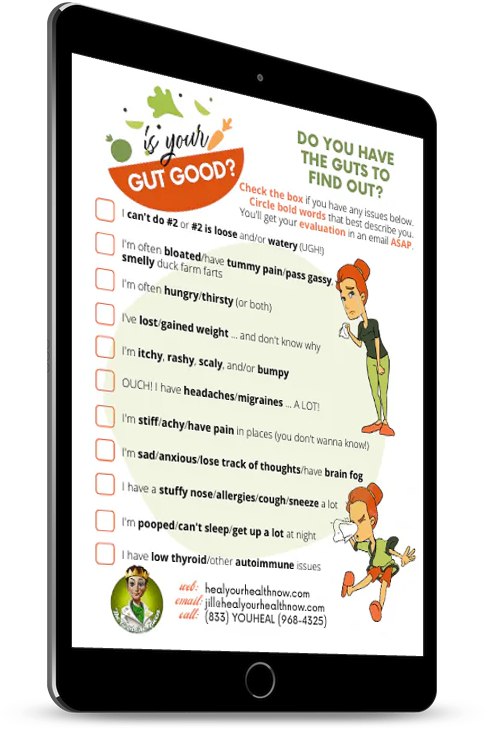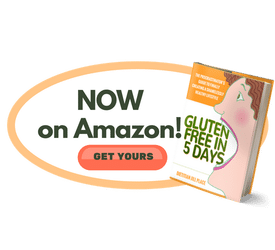 By Dietitian Jill Place
By Dietitian Jill Place
Ever wonder why you just can’t change something that’s been niggling at you probably since you were BORN? My weight has been it for me. So … the question often pops into my mind … are we addicted to comfort?
I think so. And … in our crazy times where everyone IS seeking comfort … I fear that that the “word” is actually convenience.
We’re actually addicted to convenience. Thinking it’ll bring us comfort. How wrong we are … here’s an example …
The kids (I call them “kids” because, at 75, they’re all infinitely younger than me) at my hospital are constantly discussing their next meal and sending someone out for take-out. To eat it standing up because they say, “I have no time!”
This is anathema to me … instead of eating something halfway healthy they’re eating fast food CRAP. And doing it in such a way to make their digestion REBEL.
Then the deeper question comes to mind. If we’re so addicted to convenience AKA comfort, how do we get past that to make some change? Any change …
For me, it’s getting back to weight loss after over a year mostly housebound. And eating more comfort food as a result.
As well as abandoning intermittent fasting after losing 15 pounds. Because of my hospital job and not knowing how many people I had to see on any given day.
Recently, I actually weighted myself (I’ve been avoiding scales and mirrors since the lockdown) and found that I had only gained back a few pounds.
And with THAT had the inspiration to affect some change in my life and get back to this regime that seemed easy for me Or was it?
The Pain-Pleasure (AKA Comfort) Addicting Principle
It’s a universal truth that humans seek pleasure and shun pain. Why not? Unless you’re addicted to pain/a painful situation (and some people are), you don’t want to mess with it.
But what if you … like me these days … are advocating a change for myself that may cause me pain? What if I’m so addicted to my way of eating/(not) exercising that I’d be in too much pain if I changed it?
After so many years of struggling with my eating … from binge disorder to Weight Watcher’s to Paleo to … recently … late-night almond butter pile-ons (I don’t buy it anymore … and don’t miss it [really?]), I’m wondering what the ultimate answer is. And I think it lies in some soul-searching of the past and finding the motivation to minimize short-term pain to embrace long-term pleasure in the future.
Where to start … first, state your goal in no-nonsense descriptive terms. Paint a picture of what that looks like, complete with your environment, who’s in your environment, and what you’re doing in the environment.
Let your imagination run wild. Then then read what you wrote every day. Or, even better, record in in your phone. And play it back every morning before you get out of bed.
If you have any limiting thoughts or beliefs that arise, get yourself a blank book and write them down. They could be a window into why you’re stuck in unhelpful behaviors.
Actually, this is just the beginning of your journey. Because if you’re interested in turning away from cookie dough (or almond butter) binges at 2am, journaling about the thoughts, feelings, and unhelpful behaviors around your goal can lead to A-HA moments that may enable you to stay on track despite the short-term pain of not doing them.
The Reality of Our Comfort Wiring
So I’d suggest that you might want to ask yourself some hard questions about your history around whatever behavior you want to change. And asking … and this is the key question … why am I allowing this behavior to continue?
You’ll be happy to know that the answer actually reaches beyond the pain-pleasure principle. Or maybe, when you learn the answer, you may not.
I went to some in-person (remember those?) all-day seminar called “The Psychobiology of Hope” some years ago. And learned much more than I bargained for …
Because it was the first time I heard of Rick Hanson and his book, Hardwiring Happiness. It changed my life! And the way I do my work.
I love the way Thich Nhat Hanh, the famous worldwide spirtual leader and author, puts it …
Th e cultivation of happiness is one of the most important skills anyone can ever learn. Luckily, it’s not hard when we know the way to water and nourish these wholesome seeds, which are already there in our consciousness. This book offers simple, accessible, practical steps for touching the peace and joy that are every person’s birthright.
e cultivation of happiness is one of the most important skills anyone can ever learn. Luckily, it’s not hard when we know the way to water and nourish these wholesome seeds, which are already there in our consciousness. This book offers simple, accessible, practical steps for touching the peace and joy that are every person’s birthright.
Touching Peace and Joy
Hanson basically says in the book that, because of our Neanderthal-man, reptilian-brain past, we’re hardwired … for our own survival … to absorb negative threats like a sponge. Makes sense to me … where weight is concerned don’t some of us carry on a constant battle to feed ourselves (for survival) and not eat past that (ironically for immediate pleasure that ultimately leads to eventual pain).
And , therefore, have a difficult time … with all that negative wiring that ultimately sabotages us in some ways. Especially where things like food are concerned.
But there IS hope! Hanson lays out a plan to build new neural networks (yes … you have to actually reprogram your nerves to accept the positive). It DOES take more work than the ol’ normal … but taking in the negative is truly pain with no gain.
Because positive states breed positive traits breed reactivated positive states breed reinforced positive traits. That’s why I love mindfulness … but more on that later in a separate article. As I could write reams about it.
Leaning into Discomfort
I’m so sold on this concept that I actually wrote a whole article on it called Leaning into Pain. Reading over it again, it IS a blueprint for breeding positive states.
I DO believe that we have to continually lean into pain (or a milder way to “word” it is discomfort) to break through it into that positive place we all secretly crave. And … true to my penchant for synchronicity … I happened upon an interview with Mandy Patinkin that reinforced that belief.
You probably know Patinkin from Criminal Minds and Homeland. But, before that, he was a pivotal part of some of the greatest shows on Broadway.
Yes, we’re both actors. And have had “leaning into pain” experiences to perfect our crafts. But I also think that the “leaning” idea is a metaphor for starting down the path toward those positive traits I talked about before.
Patinkin said “we learn from discomfort”. He also said a greater ability to stay with discomfort … just letting it and the mess be there instead of trying to fix things … allows us to connect with everything.
This leads to a heightened sense of the human condition. And … take it from me … a heightened sense of life that can only promote happiness and positivity. Even though, at the time, it may seem unbearable.
I thank every day my years with discomfort. It helped me grow and change in ways that I never expected.
As well as allowing me to cope with just about everything. And in love with learning. And a curiosity to further push beyond my comfort addiction.
So don’t ever think you can’t conquer your negativity. Or be afraid of discomfort. As you can see, leaning into all that is life-changing …


Leave a Reply